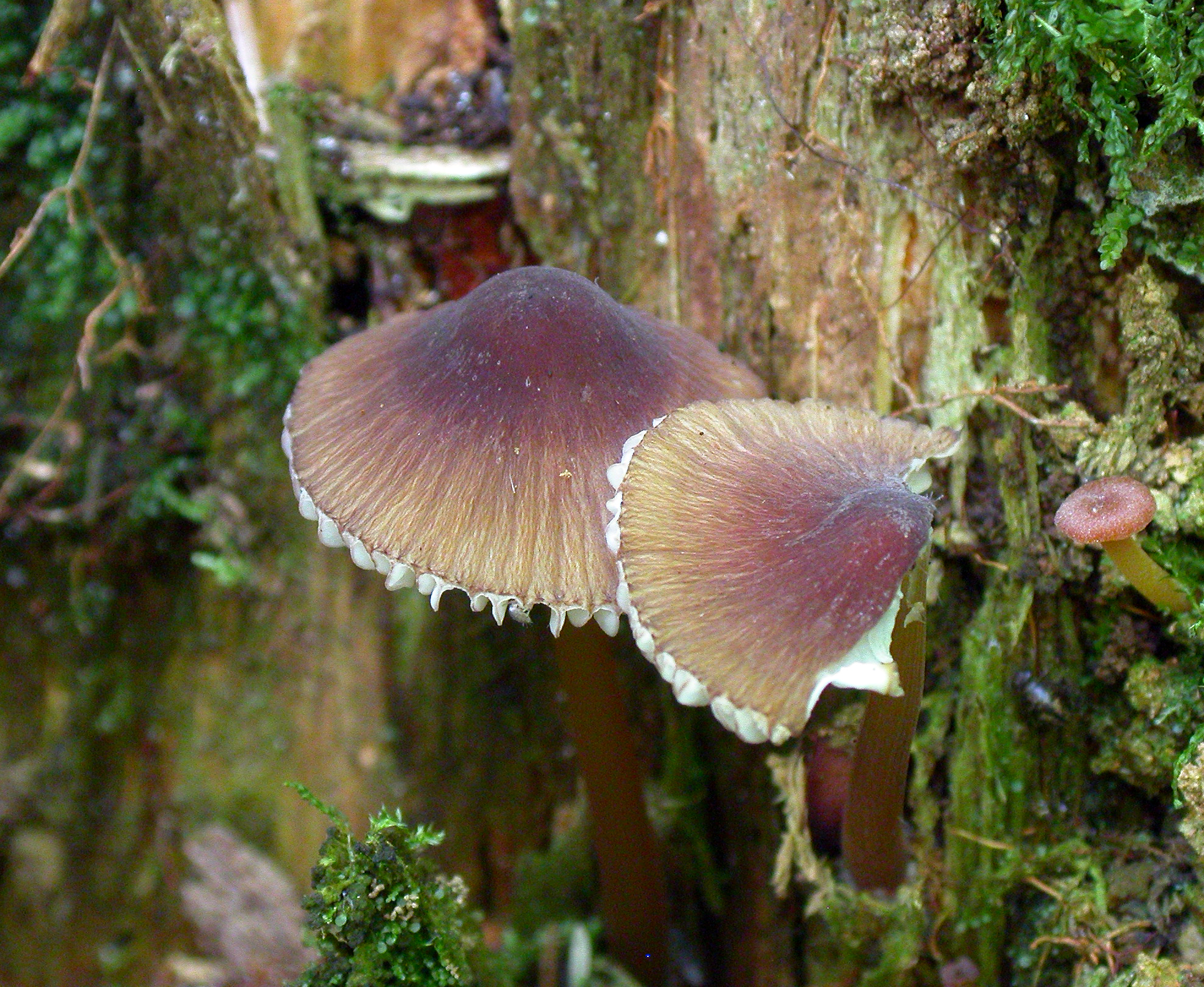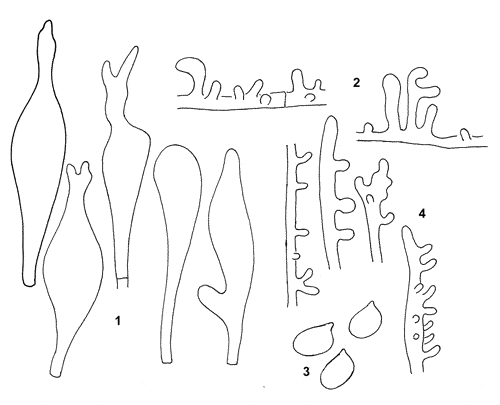Mycena viridimarginata
Mycena viridimarginata
- Innhold
- Description
- Ecology and distribution
Description
1. Cheilocystidia, 2. Hyphae of the pileipellis, 3. Spores, 4. Hyphae of the cortical layer of the stem with terminal cells.
Cap 10-35 mm across, conical or campanulate, flattening with age, without or with a low umbo, sulcate, translucent-striate, pruinose, glabrescent, hygrophanous, reddish brown, olivaceous brown, greenish brown, olive green to greyish green, margin paler. Gills 20-25 reaching the stem, ascending, adnexed to adnate, occasionally decurrent with at short tooth, whitish, greyish white, yellowish white to grey, edge olivaceous or greenish grey, dark grey to dark grey-brown, often coloured only near the margin of the cap, and sometimes not differently coloured at all. Stem 20-70 x 1-3 mm, fragile, cylindrical, equal or somewhat widened below, pruinose above, glabrous farther below, yellowish to yellowish brown (honey-coloured), darker to dark brown towards the base, apex sometimes very pale, almost white, base densely covered with whitish fibrils. Odour indistinctive to weakly nitrous. Basidia 25-32 x 8-10 µm, slenderly clavate, 4-spored. Spores 9 - 11.8(-13) x 6 – 7.5 µm, Q = 1.3-1.7, Qav ˜ 1.5, broadly pip-shaped, amyloid. Cheilocystidia 23-70 x 7-18(-29)µm, forming a sterile band, clavate, fusiform to subcylindrical, apically obtuse or mucronate or narrowed into one or two necks. Pleurocystidia absent. Lamellar trama dextrinoid. Hyphae of the pileipellis 2-8 µm wide, not gelatinized, covered with simple or branched cylindrical to more irregularly shaped excrescences 2-20 x 1.5-6 µm wich may form dense masses. Hyphae of the cortical layer of the stem 1.5-4 µm wide, slightly gelatinized, smooth or sparsely covered with obtuse warts or short cylindrical excrescences 1-6(-12) x 2-3.5 µm, terminal cells with coarse cylindrical to clavate excrescences. Clamps present in all tissues.
Ecology and distribution
Growing on fallen branches or decaying stumps of coniferous trees. Sometimes also on wood of broad-leaved trees. Summer to autumn. Found in all parts of the country.

